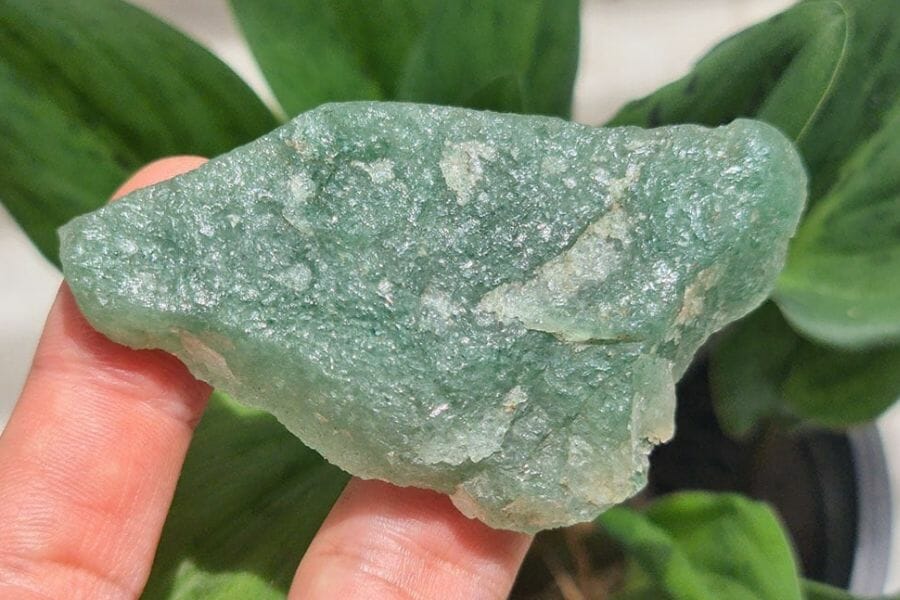Finding crystals can be a rewarding adventure, offering a unique way to explore the natural beauty and geology of the region. Whether you’re a seasoned rockhound or just getting started, knowing where to look is key to uncovering these hidden treasures.
In this state, a variety of locations provide opportunities to discover different types of crystals. From rocky outcrops in the mountains to stream beds that carry sparkling surprises, each area offers its own unique finds for those willing to search.
We can help you get started with some places you can explore for crystals below!
Crystals you can find in the US
The United States offers a wide range of crystals that reflect its diverse geology. From vibrant gems to more subtle mineral formations, there’s something to discover in nearly every region.
Calcite
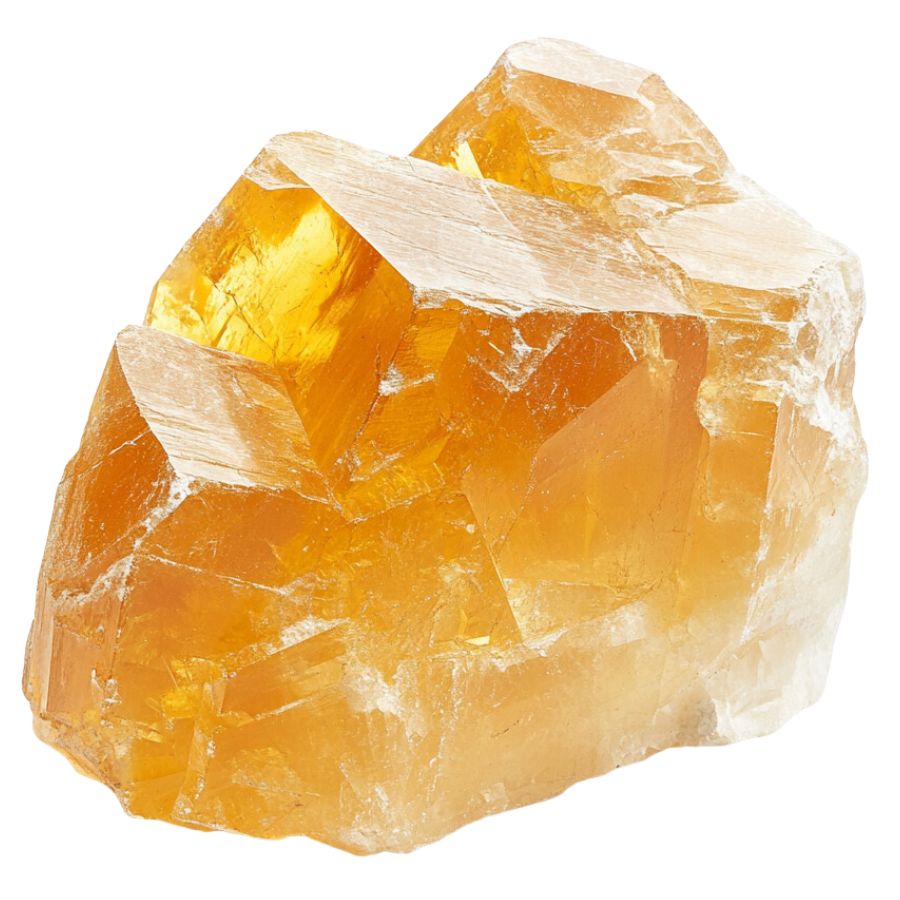
With a variety of forms and a unique property of double refraction, calcite allows objects viewed through the crystal to appear doubled. This mineral can appear in a spectrum of colors, with pure forms typically being transparent or white.
In addition, calcite reacts vigorously with acids, which aids in distinguishing it from other minerals. It also frequently contributes to the structure of sedimentary rocks such as limestone.
Gypsum
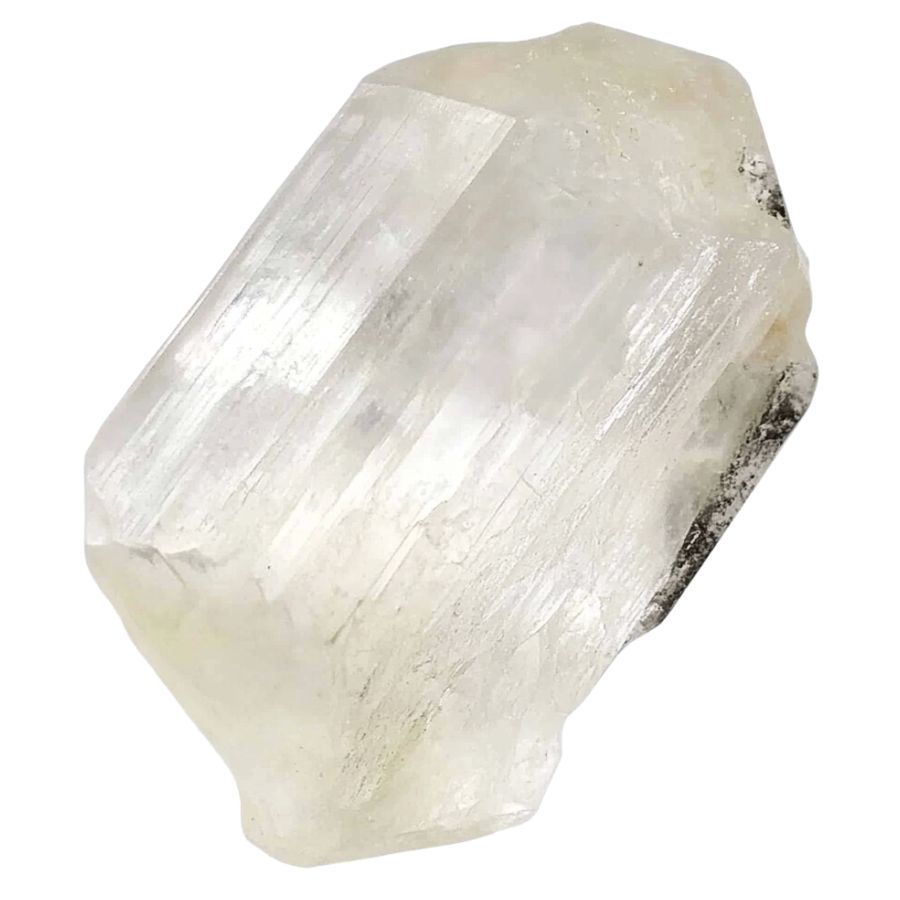
Gypsum’s notable softness allows it to be easily scratched with just a fingernail, often presenting as white or very light-colored in its pure form.
It manifests in both crystalline forms, like selenite, and massive forms such as alabaster, making it versatile in use and appearance.
Gypsum is also essential in the construction industry and is a key component in the manufacture of plaster and drywall.
Fluorite
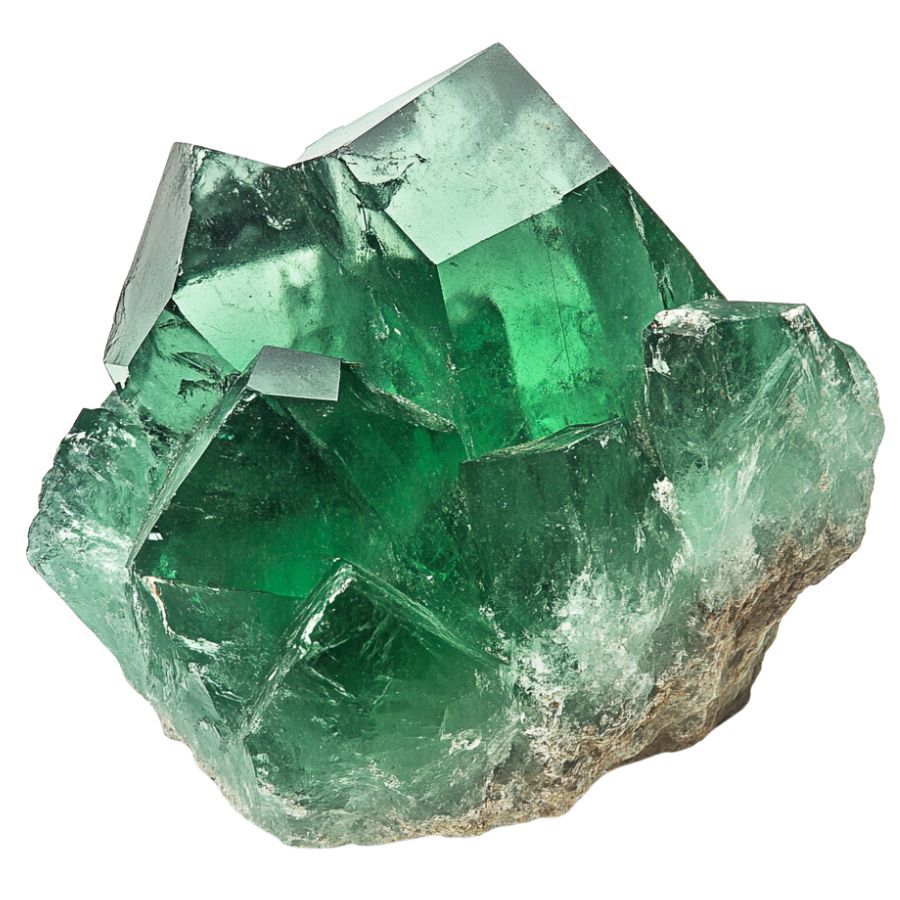
Fluorite comes in a wide range of vibrant colors, including purples, greens, blues, and yellows, and is known for forming in well-defined cubic crystals.
Beyond this, fluorite exhibits fluorescence under ultraviolet light! It can also be used in various industrial applications, including as a flux in steelmaking.
Galena
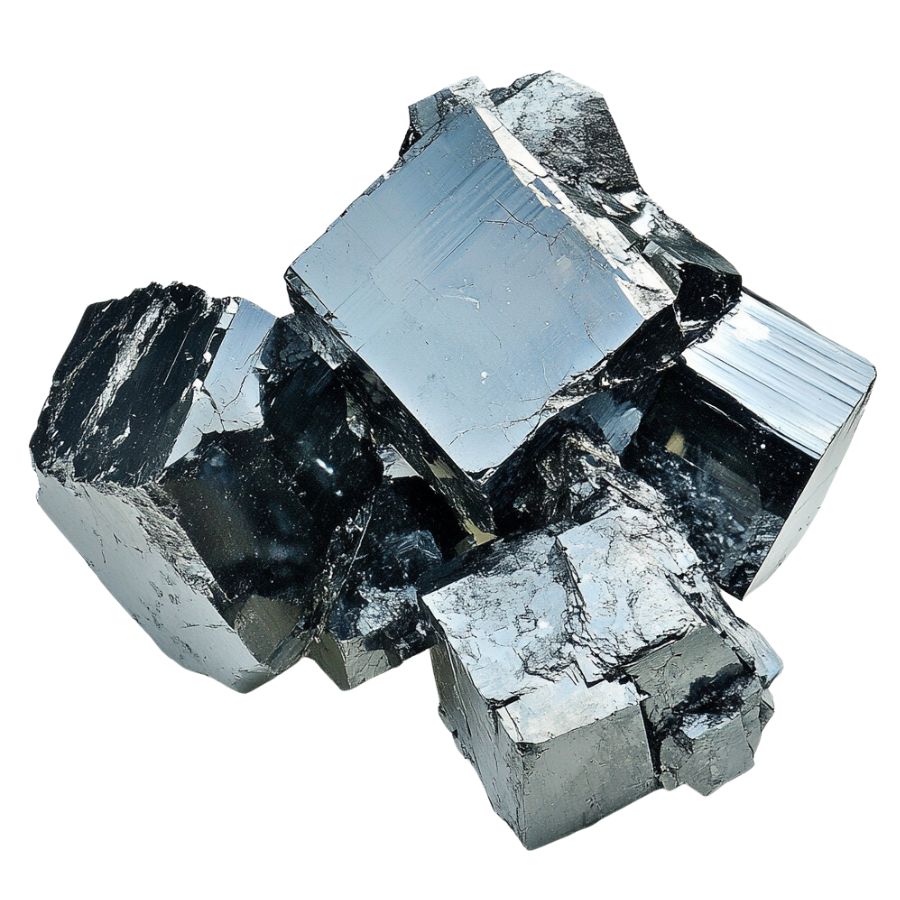
Galena distinguishes itself with a metallic luster and high density, typically found in a cube-like form. It serves as the primary ore of lead, making it important in the metal industry, while its shiny, silver color attracts collectors.
Not only does its appearance make it a subject of interest, but its weight and texture provide tangible lessons in mineral density and metallic properties. Galena also often contains traces of silver, adding to its commercial and educational value.
Corundum
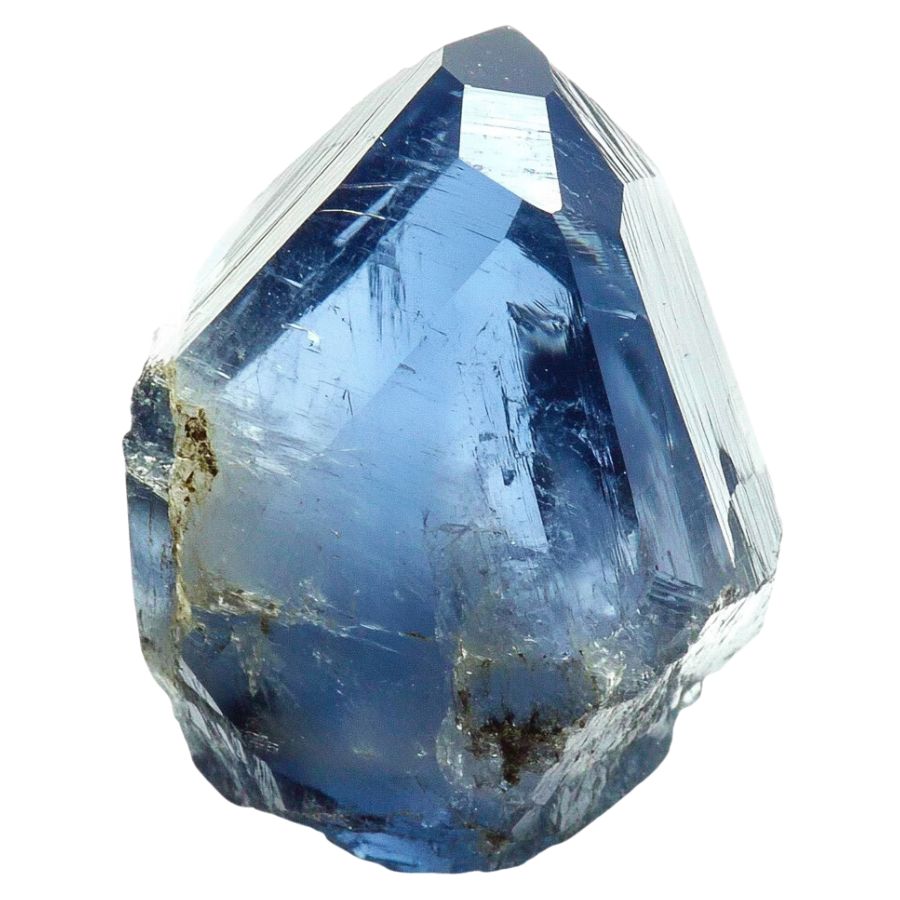
Corundum is a mineral that comes in a variety of colors, though it is typically transparent or gray. Its most famous forms are sapphires and rubies, which are prized for their vibrant blue and red hues.
The mineral is known for its remarkable hardness, ranking just below diamond on the Mohs scale. This durability makes corundum ideal for industrial abrasives and cutting tools, as well as a popular choice for fine jewelry.
Quartz
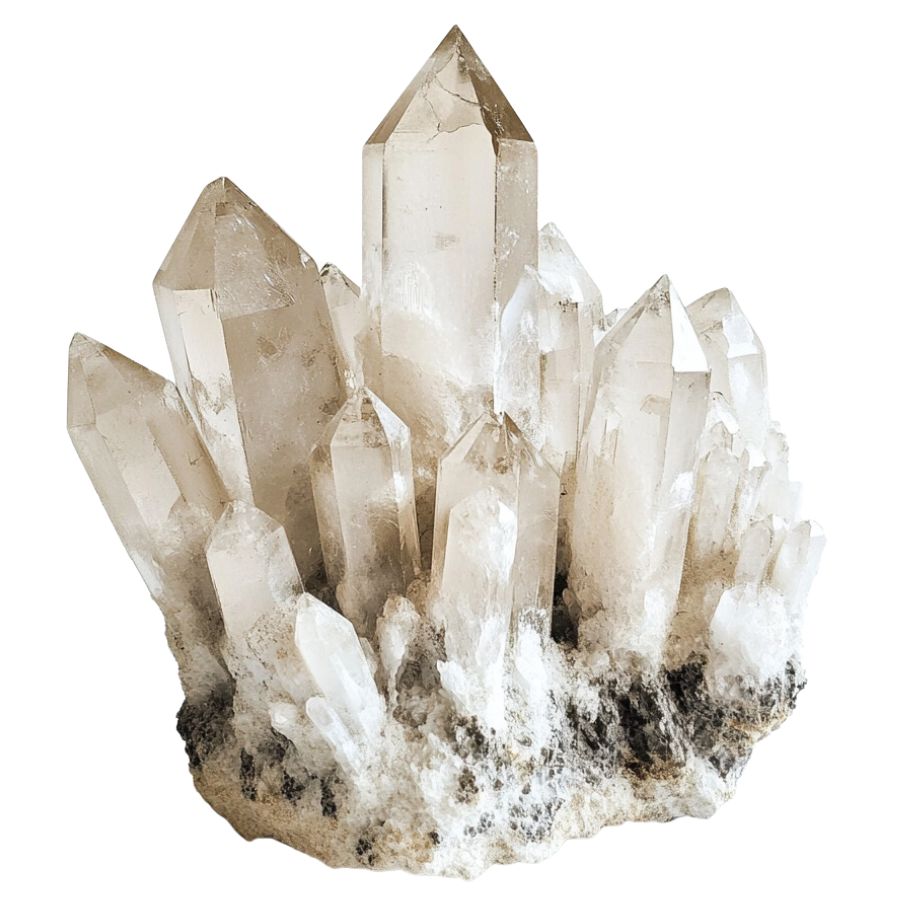
Quartz is among the most common minerals in the Earth’s crust and is prized for its durability and variety. It forms in a wide range of colors and types, from clear rock crystal to purple amethyst.
The mineral is notable for its hardness and durability, which contribute to its use in a variety of applications. Quartz is also popular in the manufacturing of electronics and watches due to its piezoelectric properties, which allow it to convert mechanical pressure into electrical energy.
Pyrite
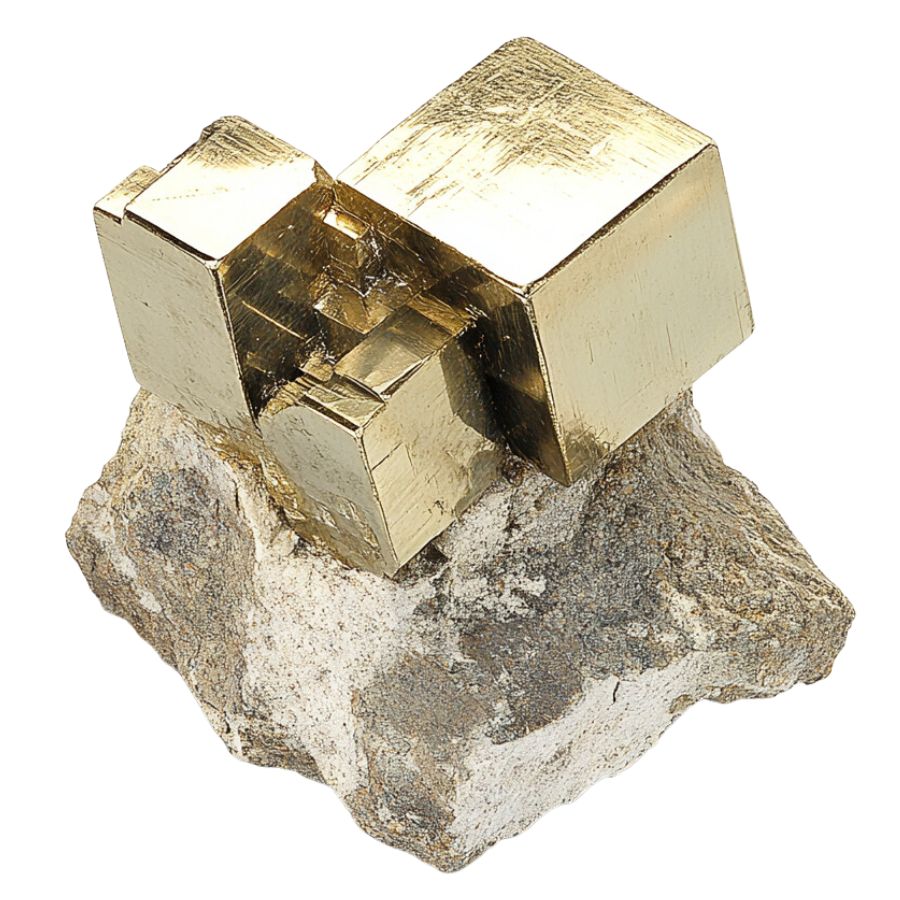
Often mistaken for gold due to its metallic luster and pale brass-yellow hue, pyrite is known colloquially as “fool’s gold.” Its characteristic cube-shaped crystal formations look man-made but are actually completely naturally formed!
Pyrite also has historical importance in producing sulfur dioxide for sulfuric acid production.
Rhodochrosite
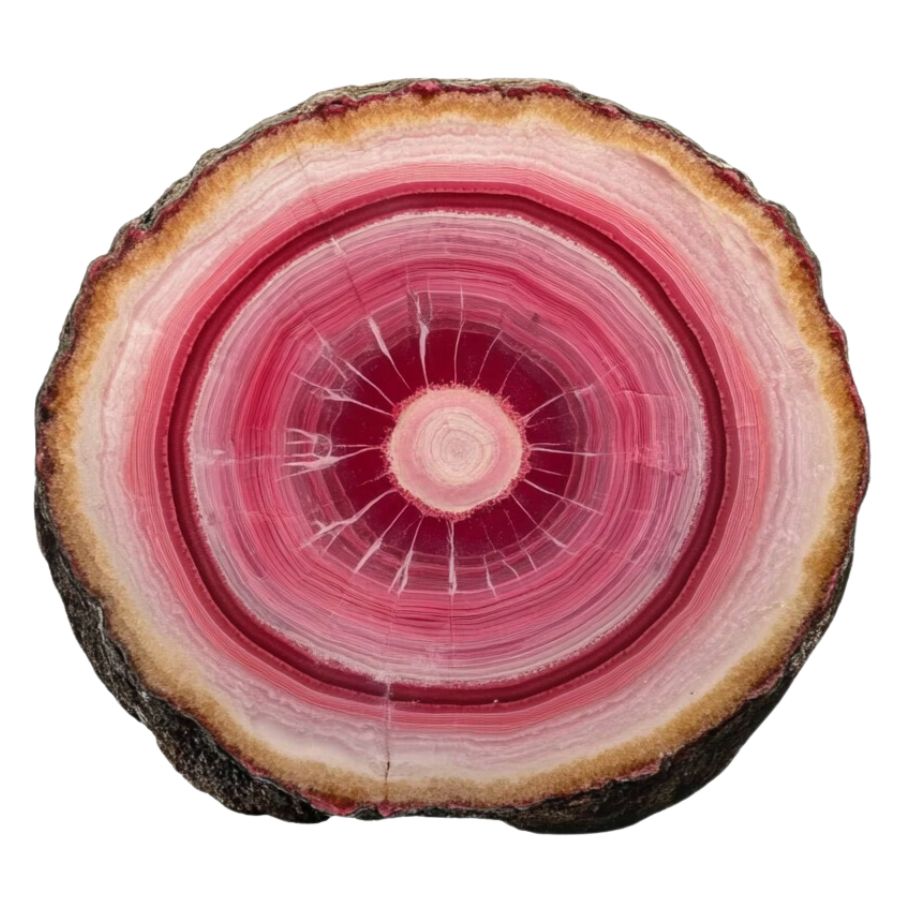
Rhodochrosite stands out with its rich pink and red hues, making it highly desirable as both a mineral specimen and a gemstone.
It typically forms in layered or stalactitic structures, with bands of colors that showcase how it grew over millions of years.
Beyond its beauty, rhodochrosite is significant as the main source of manganese, an essential element used in metal alloys.
Rhodonite
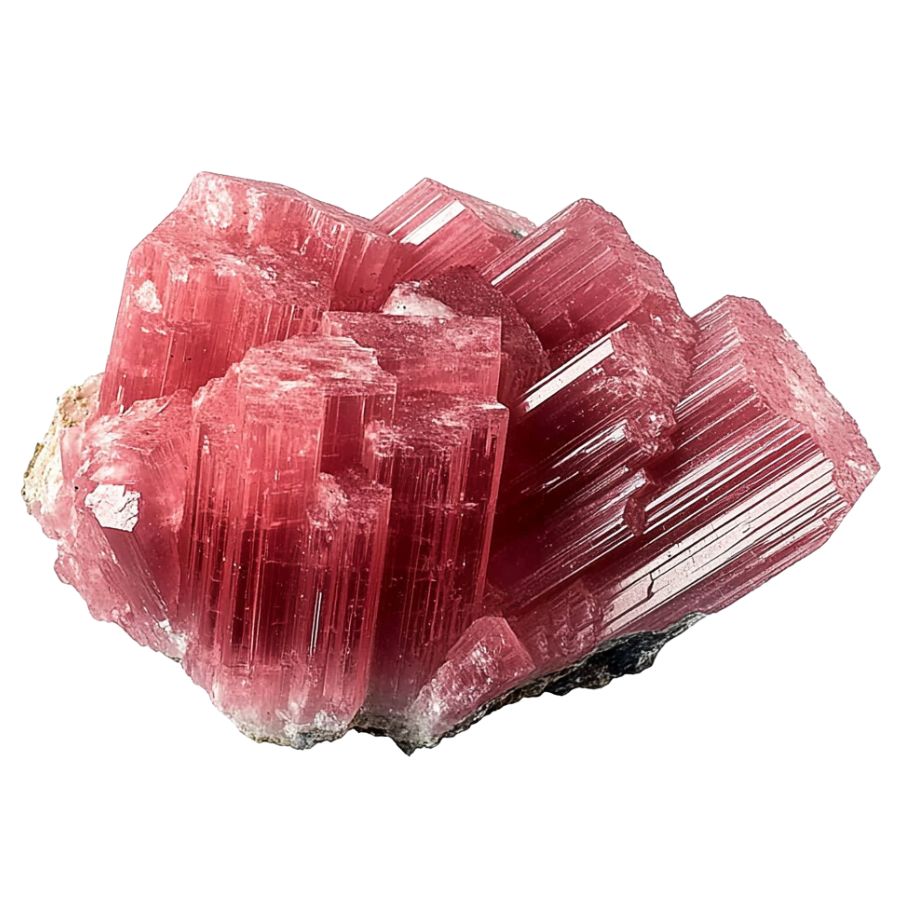
Appreciated for its deep pinks and reds, often complemented by black manganese oxide veins, rhodonite presents a dramatic appearance. It is typically found in metamorphic rocks and is used both as an ornamental stone and in jewelry.
In geology, rhodonite is significant for its role in metamorphic processes and its association with other manganese-rich minerals. It can be found in metamorphosed sedimentary rocks and is sometimes used as an indicator of the presence of manganese deposits.
Vivianite
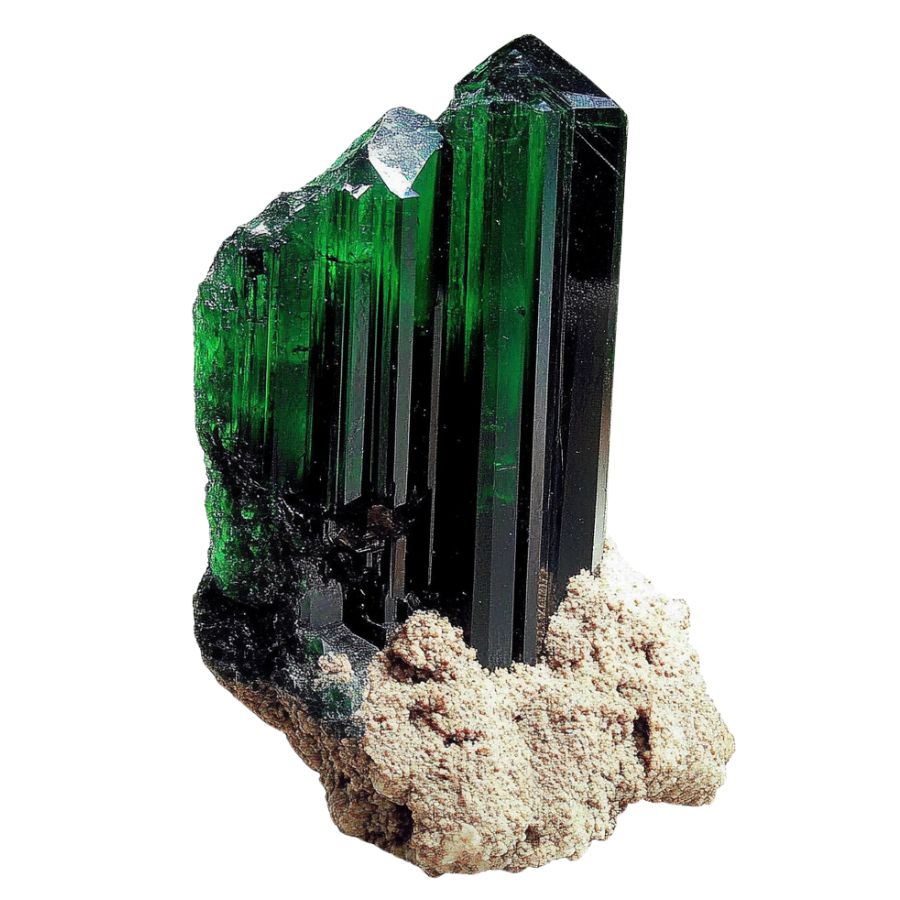
Vivianite, an iron phosphate mineral, emerges in low-oxygen environments like peat bogs or iron-rich deposits. Its striking blue to green color, which can change to a lighter shade over time due to oxidation, makes it a distinctive mineral.
Found in various geological settings, vivianite provides clues about the local conditions and the presence of phosphate deposits.
The Types of Washington Crystals You Can Find
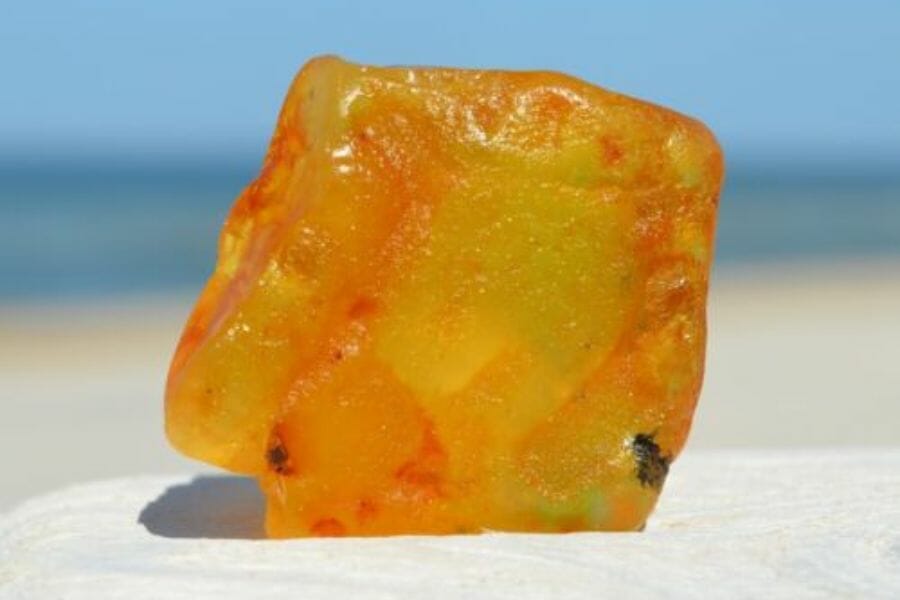
The crystals you’ll find in Washington are as beautiful as they are unique. From the stunning amethyst to the shimmering quartz, there’s something for every collector to covet. And the best part? You don’t need to be a geologist to find these precious stones. All you need is a keen eye, patience, and a sense of adventure! With so many crystal-rich locations to choose from, you’re sure to find your very own treasure trove in no time!
Rare crystals found in Washington
- Amber
- Aventurine
- Bloodstone
- Galena
- Hematite
- Jade
- Opal
More common crystals found here
- Agate
- Amethyst
- Azurite
- Carnelian
- Chalcedony
- Chalcopyrite
- Garnet
- Jasper
- Malachite
- Pyrite
- Quartz
What rough crystals look like
When you’re out looking for crystals on your own it’s important to know what you’re looking for. This is what you need to look out for:
Look for exteriors like this
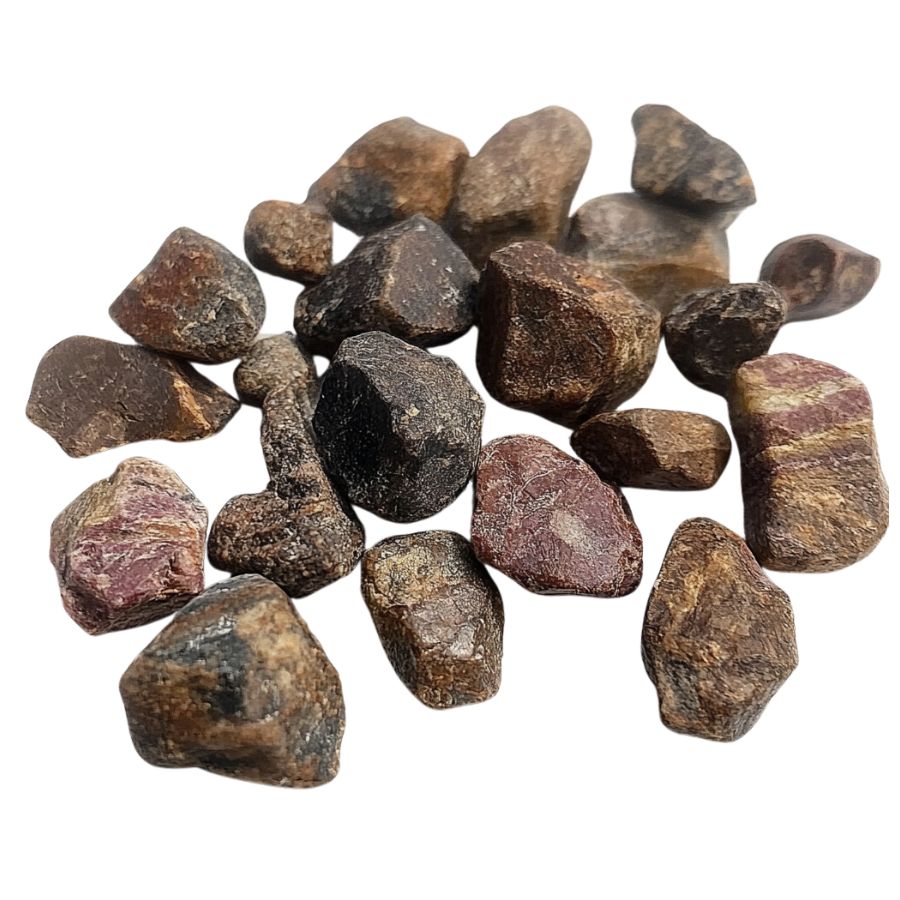
When you’re out searching for crystals in the wild, it’s essential to keep in mind that what you find won’t look like the polished stones you see in stores. One important tip is to consider what certain crystals look like in their raw, natural form.
Without the shine and smooth finish, crystals might appear rough, with jagged edges or earthy tones masking their true beauty. Understanding this can help you spot potential finds that might otherwise be overlooked.
Examine the crystal structure and shape
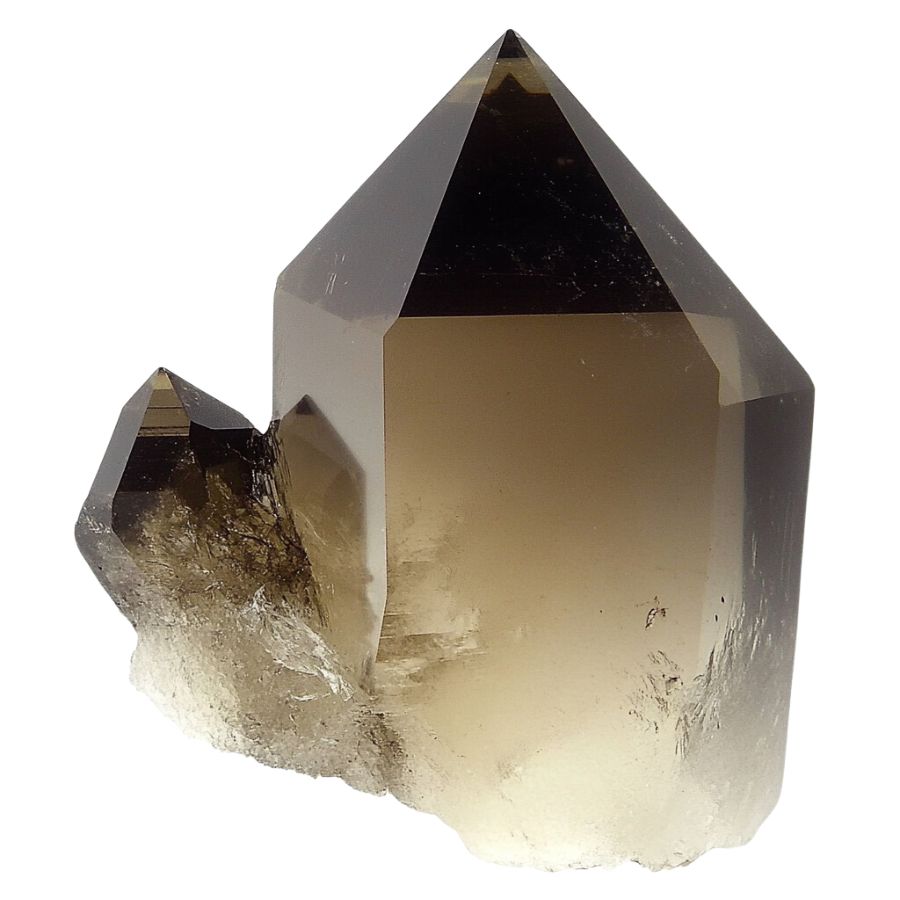
Crystals often form in specific geometric patterns that can be key to identifying them. For example, quartz is known for its hexagonal prisms, while halite typically forms cubic shapes.
By recognizing these distinct patterns, you can differentiate between various types of crystals and better understand what you’ve found.
Observe color
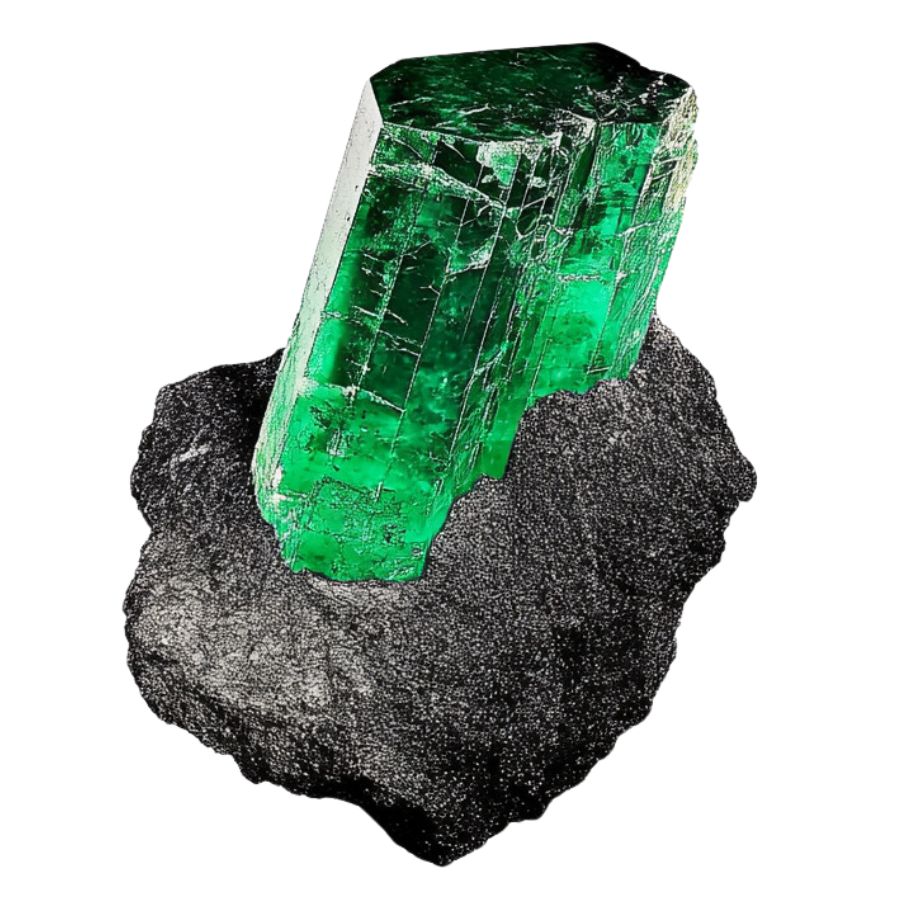
Some crystals are known for their distinct hues, like the deep purple of amethyst or the vibrant green of emerald. However, not all crystals will have strong colors; some may be clear or only slightly tinted.
Check the luster
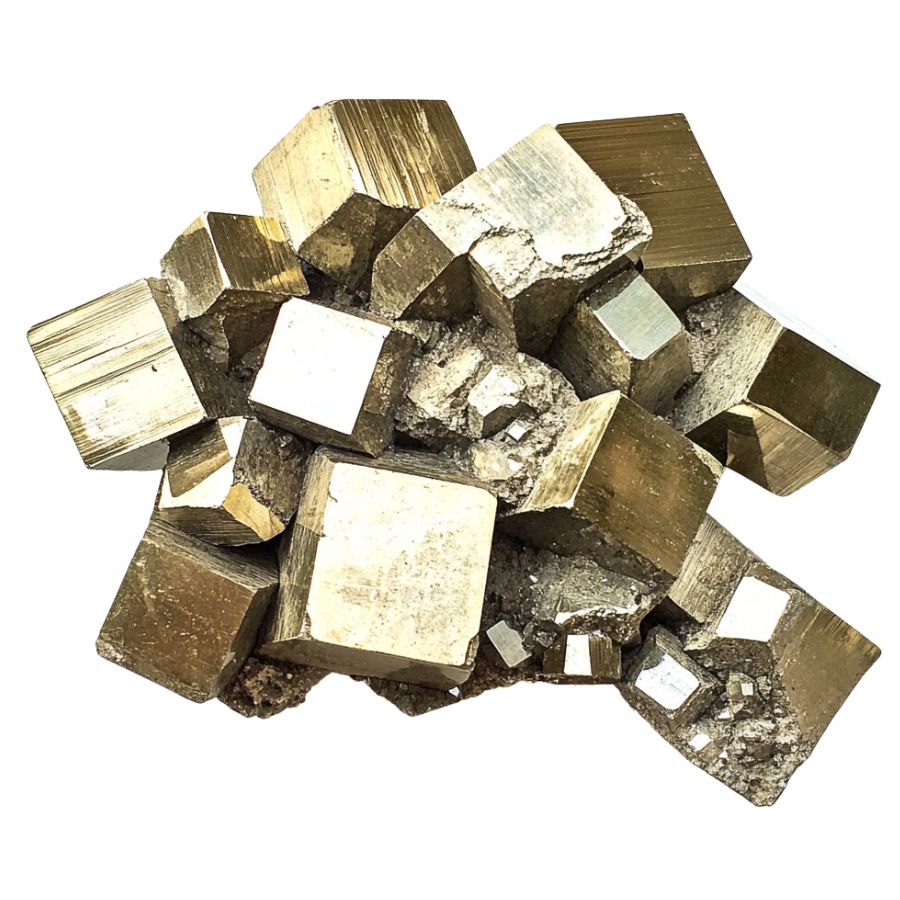
Luster refers to how a crystal’s surface interacts with light. Some crystals might have a shiny, glassy luster, while others may appear metallic or dull. This characteristic can help you determine the type of crystal you’ve found.
However, it’s important to remember that luster isn’t always obvious right away. In some cases, a crystal’s true luster will only become apparent after it’s been cleaned or polished, so keep this in mind as you examine your finds.
Evaluate the transparency
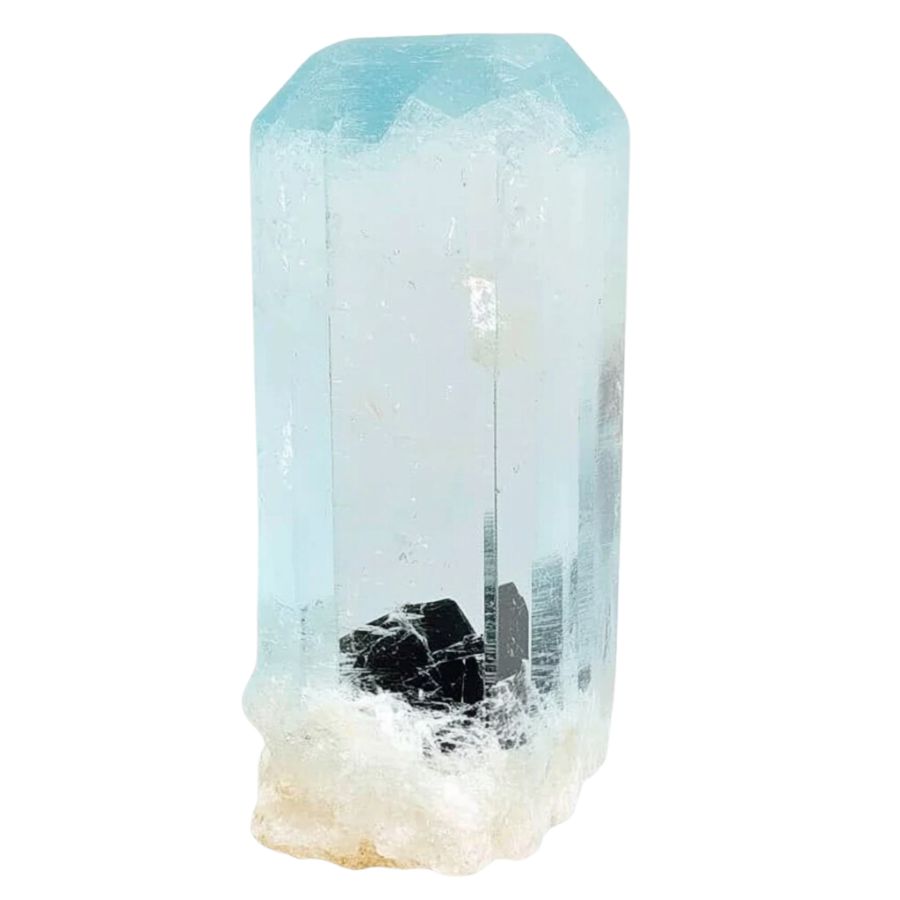
Pay close attention to how much light passes through the crystal. Some crystals are completely clear, allowing light to pass through easily, while others may be opaque and block light entirely.
You might also encounter crystals with translucent edges but opaque centers. These variations in transparency can offer valuable clues about the type of crystal you’ve found, making it easier to identify and appreciate your discovery.
A Quick Request About Collecting
Always Confirm Access and Collection Rules!
Before heading out to any of the locations on our list you need to confirm access requirements and collection rules for both public and private locations directly with the location. We haven’t personally verified every location and the access requirements and collection rules often change without notice.
Many of the locations we mention will not allow collecting but are still great places for those who love to find beautiful rocks and minerals in the wild without keeping them. We also can’t guarantee you will find anything in these locations since they are constantly changing.
Always get updated information directly from the source ahead of time to ensure responsible rockhounding. If you want even more current options it’s always a good idea to contact local rock and mineral clubs and groups
Tips on where to look
Having a better idea of where to look can greatly narrow down your search and increase your chances of finding crystals. By focusing on environments where crystals are likely to be exposed, you can spend less time searching and more time discovering.
Outcrops and Exposed Rock
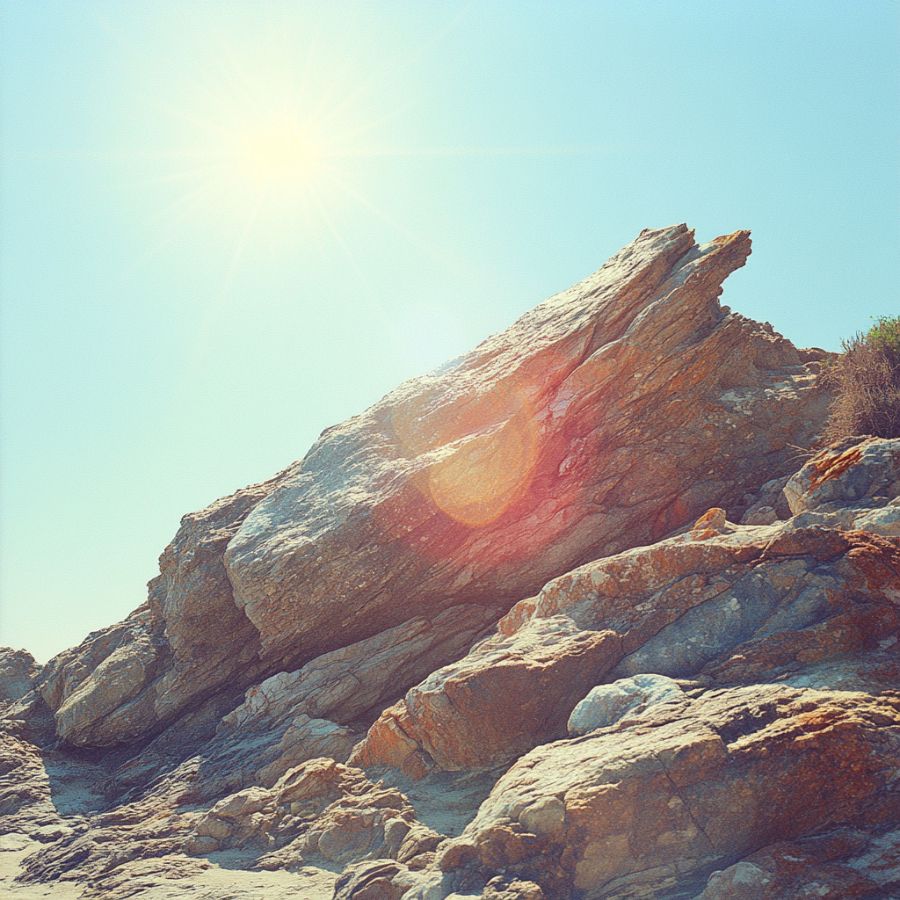
Rocky outcrops are prime locations for finding crystals and minerals. Search along the edges of outcrops, particularly where erosion has worn away the surrounding soil, revealing the rock underneath.
Pay close attention to any visible cracks, crevices, or small cavities within the outcrop, as these are often where crystals develop and can be extracted with minimal effort.
Stream Beds and Gravel Deposits
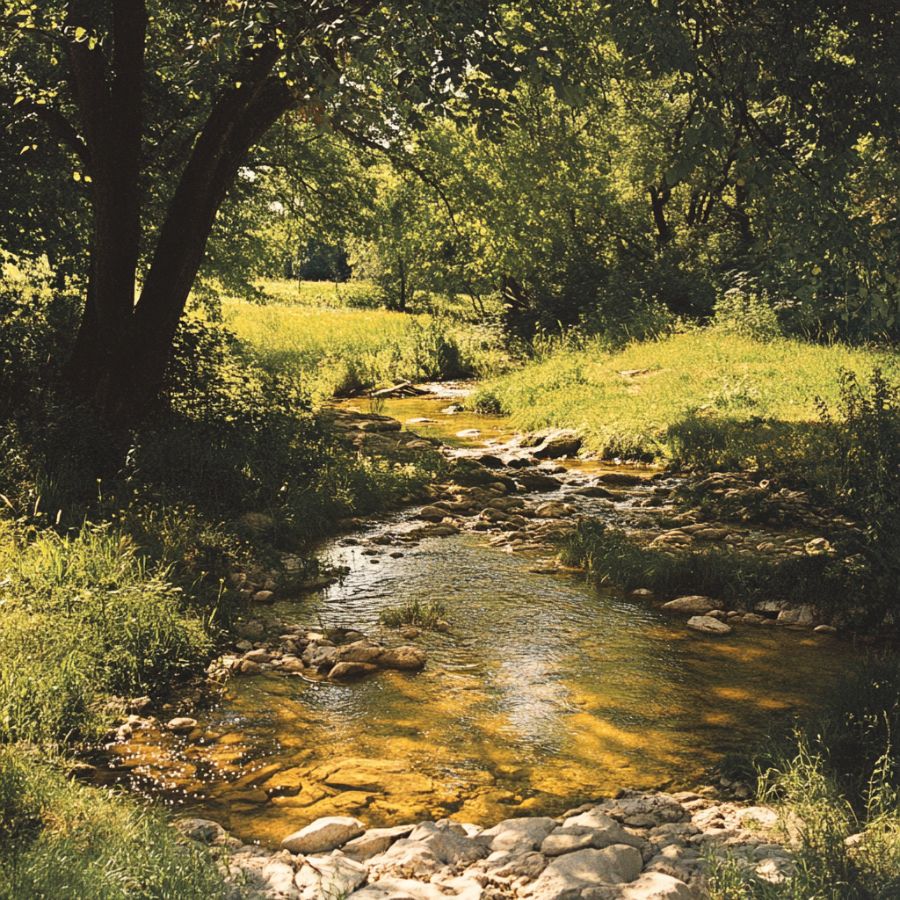
Stream beds are dynamic environments where water flow constantly shapes the landscape. Over time, water can erode rocks upstream, breaking them down and carrying mineral fragments, including crystals, downstream.
When searching in these areas, look for spots where the current has slowed, such as bends in the stream or areas behind large rocks, as these are prime locations for deposits.
Quarries and Mines
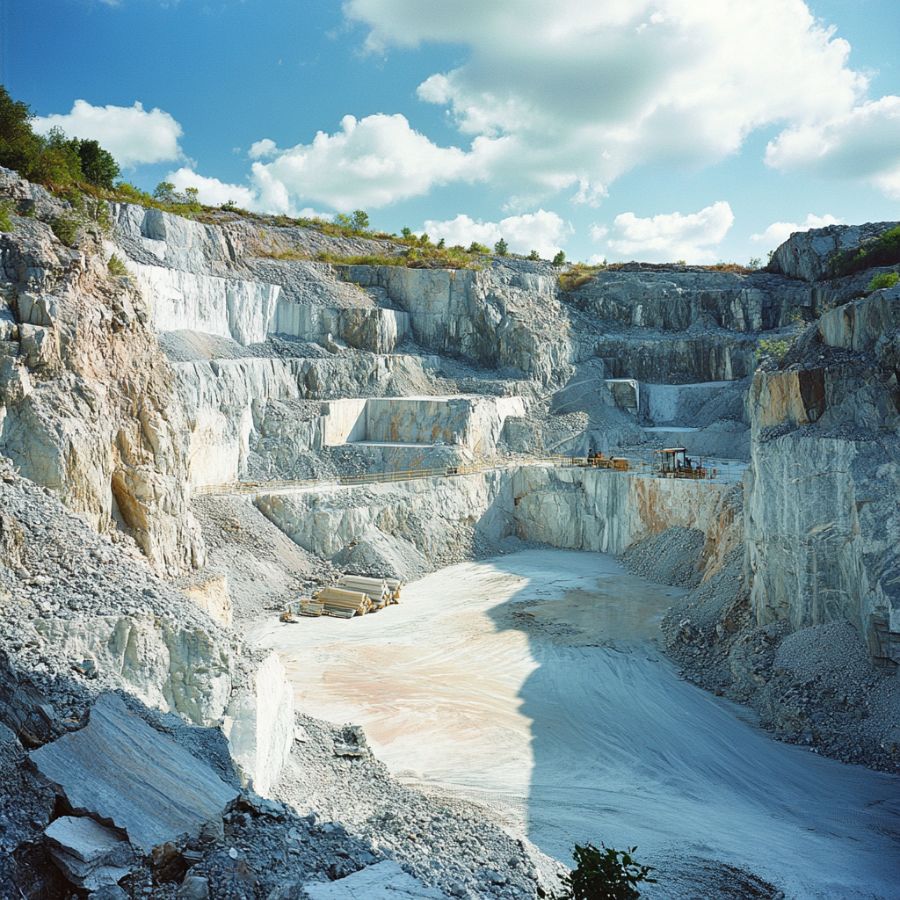
Quarries and mines are excellent places to search for crystals because they expose deep layers of rock that would otherwise be hidden beneath the surface. These sites often contain a variety of minerals and crystals that have been brought to the surface during excavation.
Pay attention to tailings piles, where waste rock is discarded, as they often contain overlooked or broken crystals. Always prioritize safety when exploring these areas and ensure that you have permission to search.
Road Cuts and Construction Sites
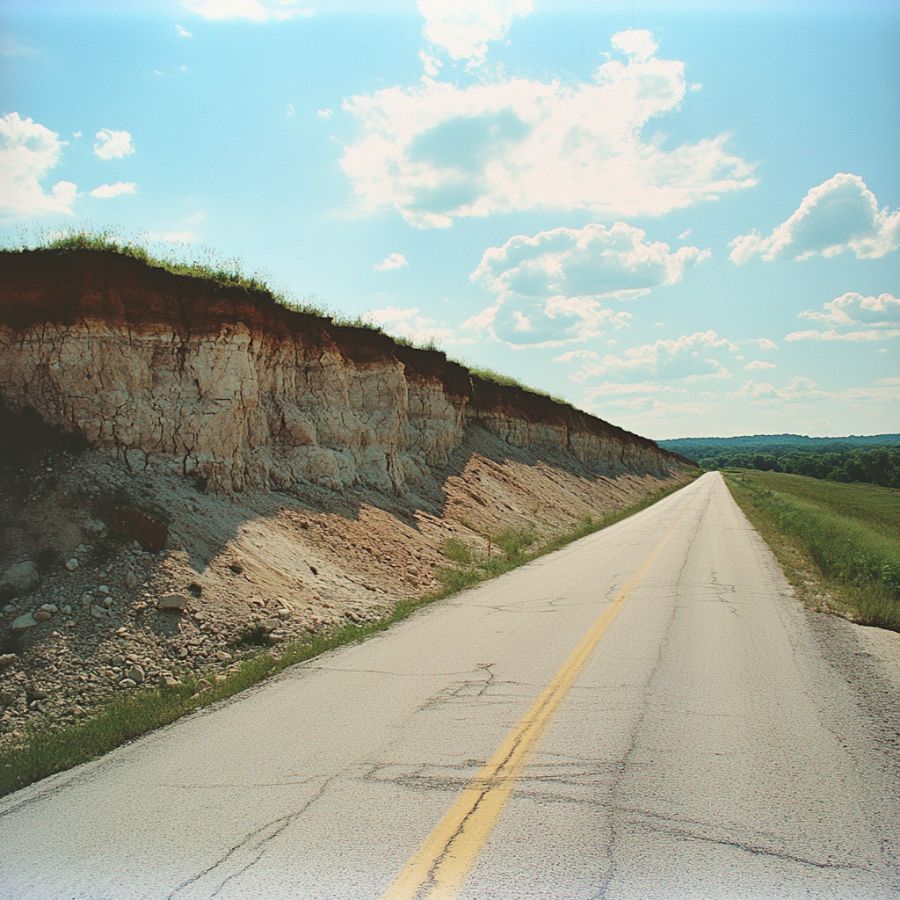
As roads are cut through hillsides or construction projects dig deep foundations, layers of rock and soil that have been undisturbed for millions of years are suddenly exposed.
Look for freshly exposed rock faces, especially where blasting has occurred, as this can create fissures or expose pockets filled with crystals. Be cautious around active construction sites, and always seek permission before exploring.
Mountainous Areas

In mountainous regions, erosion caused by wind, rain, and ice can wear away the softer rock, exposing harder crystals that have formed within. Focus on weathered and broken rock formations.
Look for scree slopes, where loose rock has accumulated at the base of cliffs. Additionally, areas near fault lines or volcanic vents are particularly promising, as they often have a higher concentration of minerals.
DON'T MISS OUT ON ANY GREAT FINDS!
While you're out searching for Crystals you're going to find A LOT of other interesting rocks and minerals along the way. The last thing you want to do is toss out something really interesting or valuable. It can be easy to misidentify things without a little guidance.
We've put together a fantastic field guide that makes identifying 140 of the most interesting and valuable rocks and minerals you will find REALLY EASY. It's simple to use, really durable, and will allow you to identify just about any rock and mineral you come across. Make sure you bring it along on your hunt!
Washington Crystal Mining Laws And Regulations
In Washington State, recreational crystal hunting is allowed on certain public lands. However, it’s important to be aware of regulations and guidelines to ensure you follow the rules and protect the environment.
One of the most important things to remember when crystal hunting in Washington is to always check with the land management agency or owner before you start digging. Some areas may be off-limits or have specific rules about collecting rocks and minerals.
Another important consideration is to avoid damaging the environment. Stay on established roads and trails, and avoid disturbing vegetation or wildlife. Additionally, it’s important to properly dispose of any trash or debris you may generate during your search.
There are a few things to be aware of when it comes to specific regulations. For example, on Washington Department of Natural Resources (DNR) lands, visitors can collect up to 250 pounds of rocks and minerals annually. However, there are restrictions on what can be collected, and some areas may be off-limits to rockhounding.
- The extensive local experience and understanding of our team
- Input from multiple local crystal hunters and crystal collecting groups
- The accessibility of the crystal mining locations
- Safety and potential hazards when collecting
- Private and public locations
- A desire to include locations for both experienced crystal hunters and those who are just starting out
Using these weights we think we’ve put together the best list out there for those who love finding new crystals for our collections!
The Best Locations For Crystal Mining in Washington
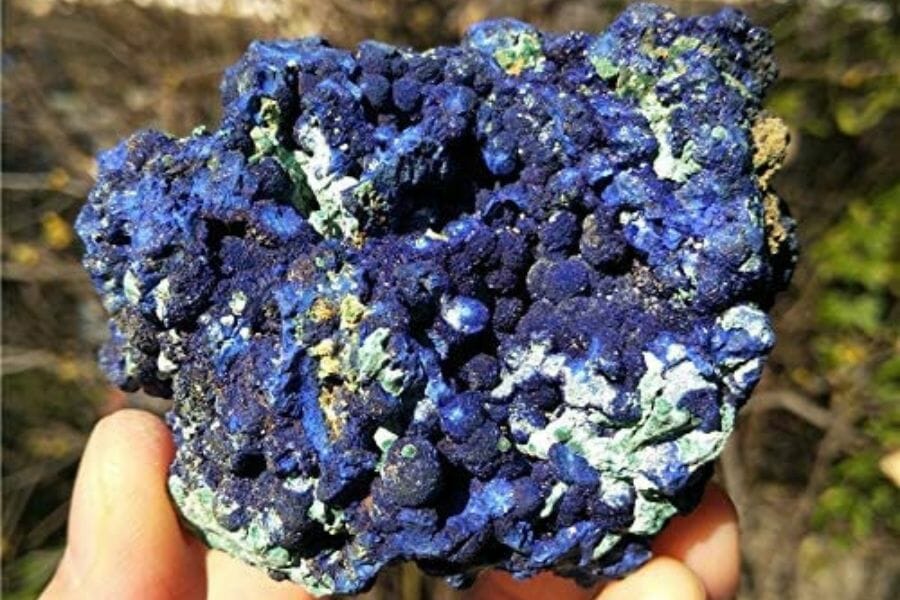
We’ve narrowed down Washington’s wonderful spots where you can find crystals to our top 5, and we know you’ll get excited to visit them!
Always Confirm Access and Collection Rules!
Before heading out to any of the locations on our list you need to confirm access requirements and collection rules for both public and private locations directly with the location. We haven’t personally verified every location and the access requirements and collection rules often change without notice.
Many of the locations we mention will not allow collecting but are still great places for those who love to find beautiful rocks and minerals in the wild without keeping them. We also can’t guarantee you will find anything in these locations since they are constantly changing.
Always get updated information directly from the source ahead of time to ensure responsible rockhounding. If you want even more current options it’s always a good idea to contact local rock and mineral clubs and groups
Bell Mountain Mine is Our Favorite Crystal Mine in Washington
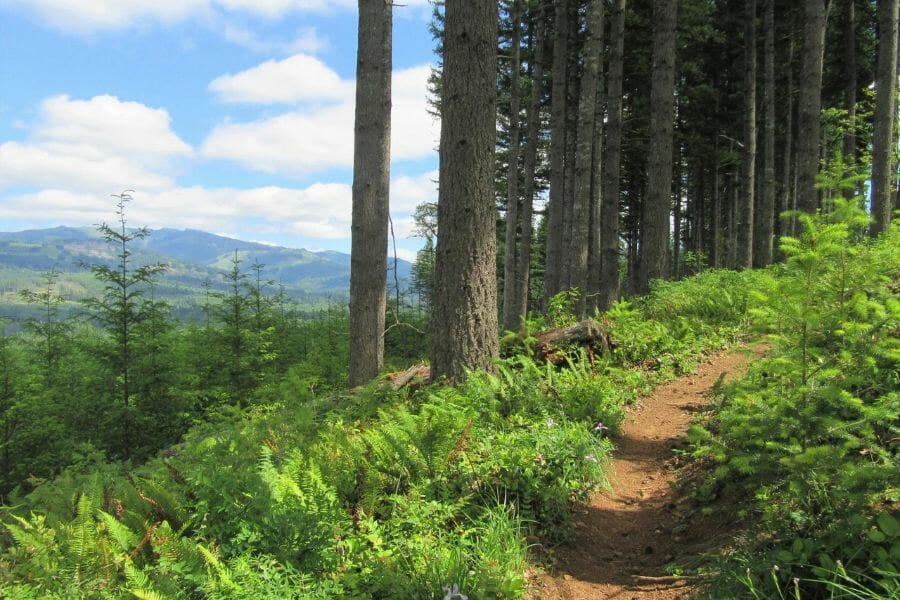
Grays Harbor County, WA
Bell Mountain Mine is a well-known location in Washington for finding beautiful and unique crystals. It has a rich history dates back to the early 1900s when it was first discovered by miners looking for copper. Although the mine is no longer operational, it has become a popular spot for rockhounds and crystal enthusiasts worldwide. It’s among the top locations for gem mining in Washington.
Visitors to Bell Mountain Mine can expect to find some truly unique and stunning crystals. The colors and shapes of the crystals found here are unlike any other, and they make for excellent additions to any rock collection. With so many minerals to discover, it’s no wonder Bell Mountain Mine is such a popular destination for crystal hunters.
Where we found crystals at the Bell Mountain Mine
The area surrounding Bell Mountain Mine was where we found the most agates.
DON'T MISS OUT ON ANY GREAT FINDS!
While you're out searching for Crystals you're going to find A LOT of other interesting rocks and minerals along the way. The last thing you want to do is toss out something really interesting or valuable. It can be easy to misidentify things without a little guidance.
We've put together a fantastic field guide that makes identifying 140 of the most interesting and valuable rocks and minerals you will find REALLY EASY. It's simple to use, really durable, and will allow you to identify just about any rock and mineral you come across. Make sure you bring it along on your hunt!
Crescent Beach
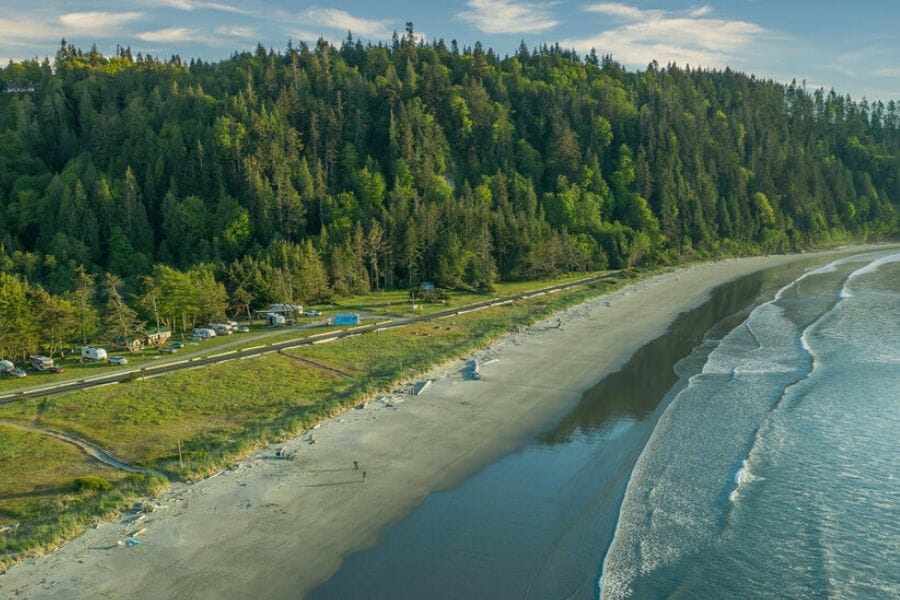
Clallam County, WA
Crescent Beach is a picturesque location in Washington that is beloved by crystal hunters and beachgoers alike. Located on the Olympic Peninsula, Crescent Beach has a rich history that dates back to the early 1900s when it was first discovered as a site for crystal hunting. The beach is known for its vast stretches of sand, towering cliffs, and beautiful tide pools, making it a popular destination for adventurers and nature lovers.
The geology of Crescent Beach is diverse and fascinating. The area is home to a mix of sedimentary and volcanic rocks, creating the perfect environment for crystal formation. The colors and patterns of the crystals found here are truly unique and stunning.
Where we found crystals at Crescent Beach
There are numerous agate and jasper crystals in the gravels of Crescent Beach. You can check how much is crystal worth through this guide.
Gifford Pinchot National Forest
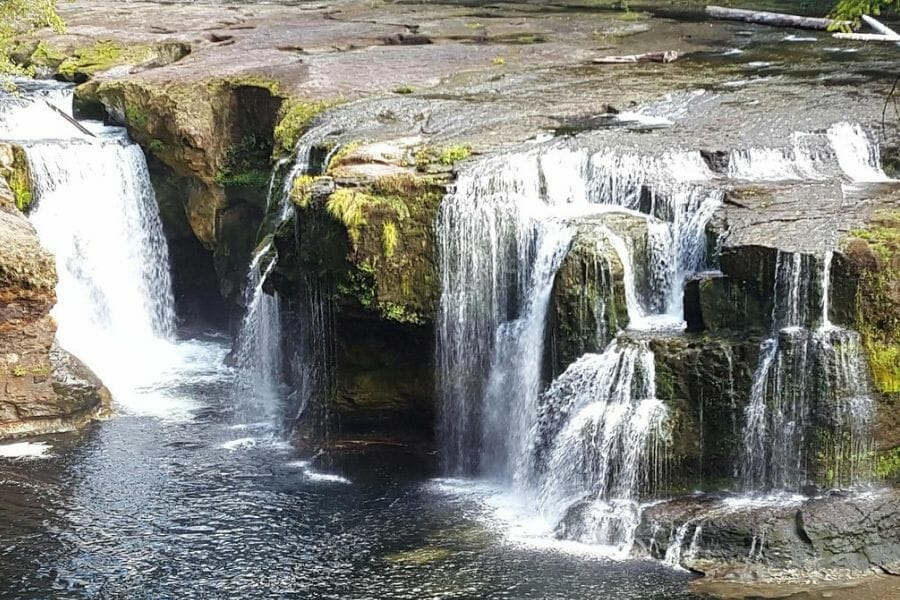
Skamania County, WA
Gifford Pinchot National Forest is a hidden gem in Washington that nature enthusiasts and crystal hunters alike love. Named after the first Chief of the United States Forest Service, Gifford Pinchot, the forest has a rich history that dates back to the early 1900s when it was established as a national forest. Located in the southwestern part of the state, Gifford Pinchot National Forest is a prime destination for adventurers and explorers.
The Gifford Pinchot Nationa Forest has a rich and fascinating geology and geography. A mixture of volcanic and sedimentary rocks found in the forest has produced the ideal conditions for crystal growth. The crystals that have been discovered here have really amazing colors and patterns.
Where we found crystals at the Gifford Pinchot National Forest
Most of the crystals we discovered in the Gifford Pinchot National Forest area were made of agates, carnelians, chalcedony, jaspers, and quartz.
Greens Creek
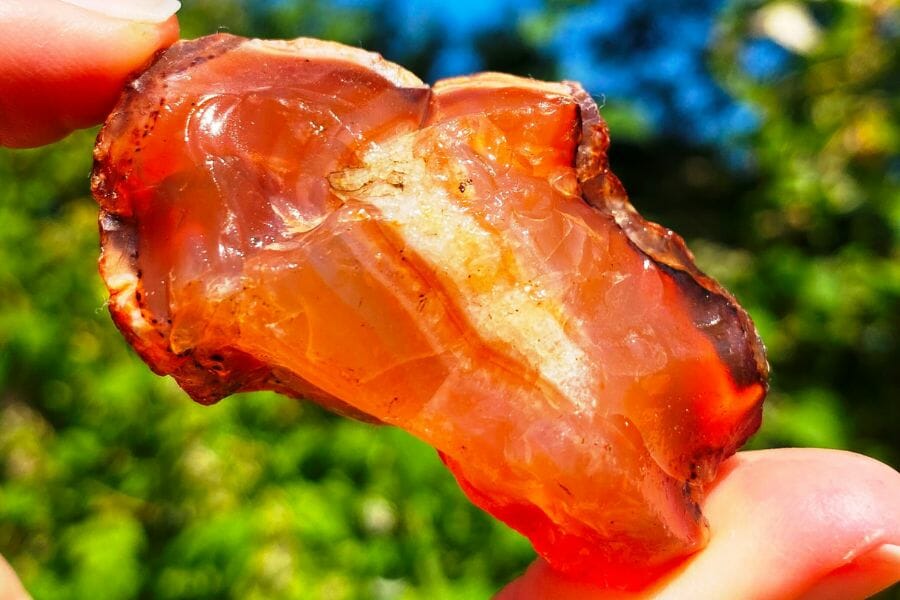
Pacific County, WA
If you’re a crystal fanatic looking for your next adventure, you’ll definitely want to check out Greens Creek in Washington state. This locale boasts an abundance of precious minerals and gemstones, making it a prime destination for crystal hunting.
Located in the Cascade Mountains, Greens Creek is surrounded by rugged terrain and narrow valleys formed by the mountains’ uplift and subsequent erosion. The area’s geology is mainly composed of volcanic and metamorphic rocks, like gneiss and schist, that are thought to have been formed during the Late Cretaceous to early Tertiary magmatic and hydrothermal activity.
The area’s unique geological conditions make Greens Creek an ideal place to find crystals. With some digging and patience, you can uncover some stunning gems that will make any rock collection shine.
Where we found crystals at Greens Creek
You will find agate, carnelian, chalcedony, and jasper crystals at every creek bank and bed along Greens Creek.
Forty-Five Mine
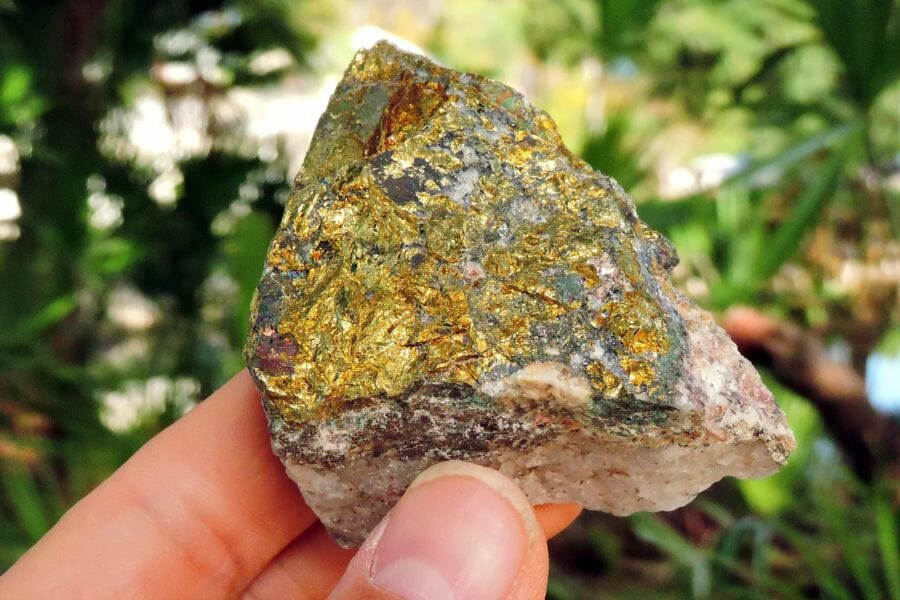
Sultan Mining District in Snohomish County
Forty-Five Mine is a hotspot for rockhounds and crystal enthusiasts. The area is known for its unique geology, with various minerals and crystals in the region. The mine is on a quartz vein, responsible for abundant beautiful and rare crystals.
Forty-Five Mine is the perfect spot to get your hands dirty! The mine allows you to dig for your crystals and minerals, creating an exciting and rewarding experience. Forty-Five Mine also offers stunning views of the surrounding mountains and valleys, making for a picturesque setting to spend the day.
Where we found crystals at Forty-Five Mine
We had the best luck finding chalcopyrite crystals at Forty-five Mine.
Our Other Favorite Places For Crystal Hunting
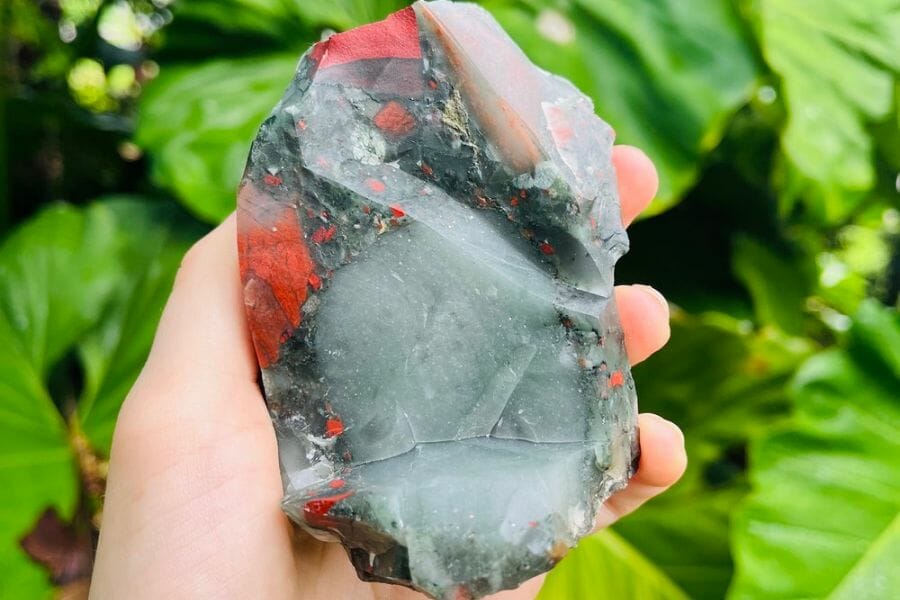
You can look for crystals in this area in addition to the top five spots mentioned above. This state is very prosperous, thus, there are many different locations where you can look for crystals and find geodes in Washington.
Where you can find crystals for free in Washington
The finest places to find crystals in this state often need payment before digging, but there are certain places where you won’t have to pay anything to seek these natural wonders.
| County | Location |
| Chelan | Railroad Creek for agate and jasper |
| Clallam | Gravels of the Dungeness River for agates and jasper |
| Clallam | Lake Crescent and ocean beach gravels of Soleduck River for agate and jasper |
| Cowlitz | Walter Swift farmhouse for bloodstone and carnelian |
| Douglas | Rock Island Dam for pyrite |
| Kings | Fifteen Mile Creek for amber |
| Lewis | Area road cuts and banks of Lucas Creek for agate, carnelian, chalcedony, and jasper |
| Okanogan | Salmon River and Happy Hill for aventurine and quartz |
| Pend Oreille | Sacheen Lake for garnet |
| Pierce | Sigmund Ranch for amethyst |
| Snohomish | Deer Creek for jade |
| Spokane | Little Spokane River for garnet and quartz |
Other great places to dig for crystals
We’ve compiled a list of several places you could go to if you don’t mind spending to search for amazing crystals. Remember to verify the costs before going because they may change depending on the season.
| County | Location |
| Lewis | Mercury Mines for chalcedony |
| Pierce | Carbon River mines for pyrite |
| Skagit | Skagit River mines for hematite |
| Stilaguamish | Sultan River mines for azurite, garnet, and malachite |
The Best Crystal Shops In Washington
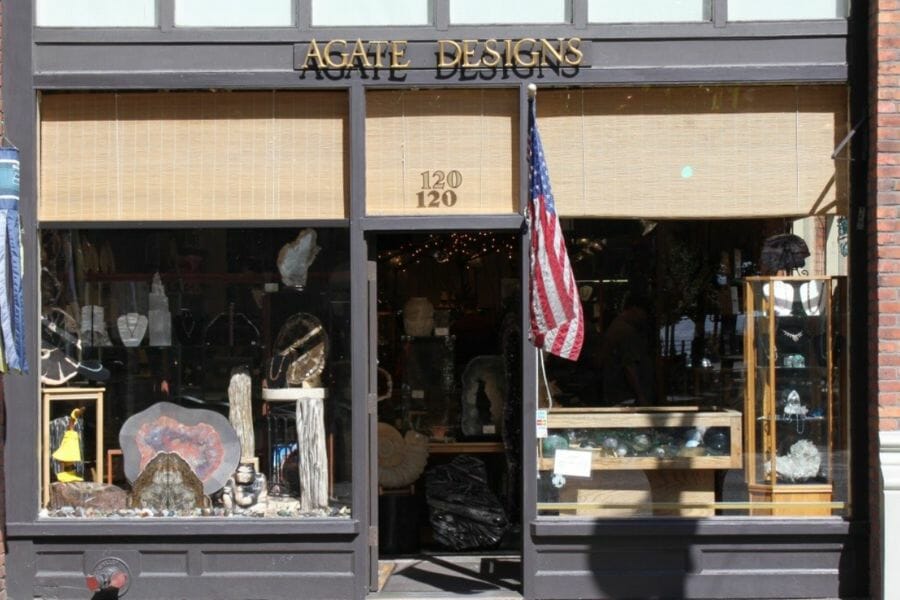
You might want to consider buying crystals from some of Washinton state’s greatest crystal shops if you don’t have the time or the desire to go on a crystal hunt. At each of the shops we’ve listed below, you can select from a variety of crystals:
- Agate Designs – 317 NW Gilman Blvd ste 15, Issaquah, WA 98027, United States
- All Good Things, Crystals, and Rocks – 1630 N Wenatchee Ave #3, Wenatchee, WA 98801, United States
- Celestial Awakenings – 6610 NE Hwy 99, Vancouver, WA 98665, United States
- Cove Crystals and Gifts – 510 SE Old Arcadia Rd, Shelton, WA 98584, United States
- Crystallography Gems – 650 S Orcas St Ste 218, Seattle, WA 98108, United States
- Earthlight Gems and Minerals – 46 Lakeshore Plaza, Kirkland, WA 98033, United States
- Gem Heaven Spiritual Store – 1501 Pike Place Hillclimb Walk # 408, Seattle, WA 98101, United States
- Jerry’s Rock and Gem – 804 W Valley Hwy, Kent, WA 98032, United States
- Magickal Earth – 1522 Cole St, Enumclaw, WA 98022, United States
- Starseed Crystals – 1201 S Union Ave Suite 3, Tacoma, WA 98405, United States
Additional places to find crystals in nearby states
If you’ve already tried all of our recommendations above or are planning a trip out of the state, you should check out our guides for neighboring states:
If you have any recommendations we haven’t covered please leave them in the comments below!

